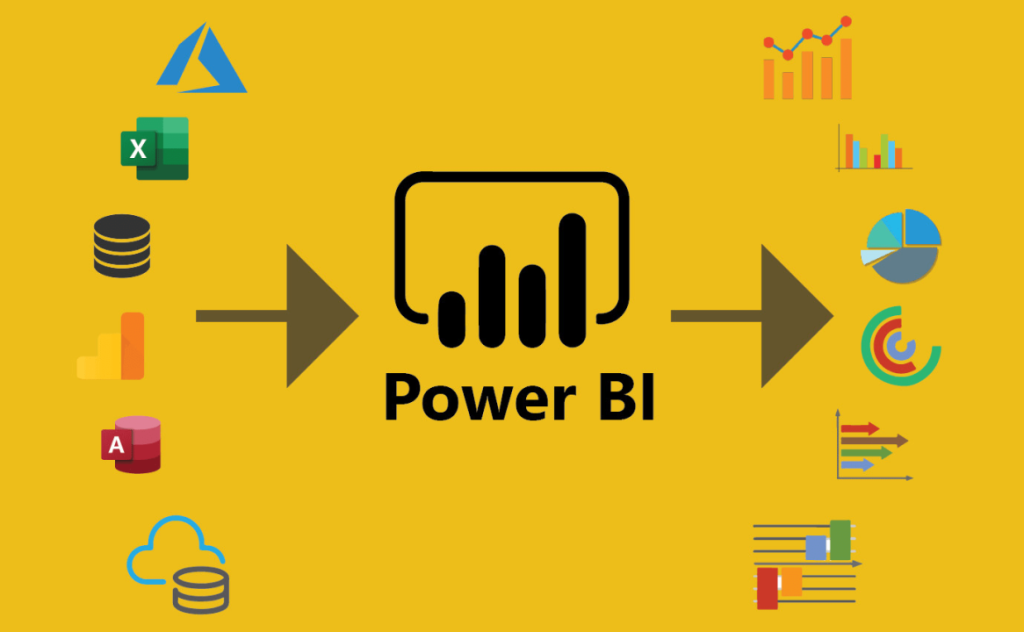Data-driven Decision Making: Harnessing the Power of Power BI

Introduction:
In the ever-evolving landscape of business, the ability to make informed decisions has become a crucial aspect of success. With the exponential growth of data, organizations need tools that not only gather and process information but also translate it into actionable insights. One such powerful tool is Microsoft’s Power BI, revolutionizing data-driven decision-making across industries.
Understanding the Essence of Data-driven Decision Making:
Data-driven decision-making involves leveraging data to guide strategic choices within an organization. It goes beyond intuition and gut feeling, relying on insights derived from comprehensive analysis. The objective is to enhance efficiency, reduce risks, and ultimately improve business outcomes.
The Rise of Power BI:
In recent years, Power BI has emerged as a game-changer in the realm of business intelligence. Developed by Microsoft, Power BI is a suite of business analytics tools that empower organizations to visualize their data and share insights across the enterprise. It seamlessly integrates with a variety of data sources, providing a holistic view of information.
Key Features of Power BI:
- Data Connectivity: Power BI allows users to connect to a wide range of data sources, from Excel spreadsheets to cloud-based databases. This versatility ensures that businesses can consolidate their data, irrespective of its origin.
- Interactive Dashboards: The platform enables the creation of interactive dashboards that offer real-time updates. This feature is invaluable for monitoring key performance indicators (KPIs) and identifying trends promptly.
- Advanced Analytics: Power BI goes beyond basic reporting, offering advanced analytics capabilities. Users can perform complex data modeling, run predictive analytics, and gain deeper insights into their datasets.
- Data Visualization: Visualization is a cornerstone of effective data communication. Power BI provides a rich array of visualization options, including charts, graphs, and maps, making it easier for users to interpret and understand complex data.
Implementing Power BI for Data-driven Decision Making:
- Data Integration:
- Start by connecting Power BI to your data sources. This could include databases, cloud services, or even streaming data.
- Ensure data is clean and well-structured to avoid discrepancies in analysis.
- Creating Reports and Dashboards:
- Design intuitive reports that highlight key metrics and trends. Keep in mind the audience and tailor the visuals accordingly.
- Develop interactive dashboards that provide a comprehensive overview of the data. Incorporate filters for a customized user experience.
- Utilizing Advanced Analytics:
- Explore the advanced analytics features to uncover patterns and trends that might not be apparent through traditional reporting.
- Leverage machine learning capabilities for predictive modeling, forecasting future scenarios based on historical data.
- Collaboration and Sharing:
- Power BI facilitates collaboration by allowing users to share reports and dashboards with stakeholders.
- Implement role-based access control to ensure that sensitive information is accessible only to authorized personnel.
Benefits of Power BI in Decision Making:
- Faster Decision-making:
- By providing real-time insights, Power BI accelerates the decision-making process. Businesses can respond promptly to market changes and emerging opportunities.
- Increased Visibility:
- Dashboards and reports offer a bird’s eye view of the organization’s performance. This increased visibility aids in identifying areas for improvement and optimizing operations.
- Data-driven Culture:
- Power BI fosters a data-driven culture within an organization. Employees at all levels can access and understand data, promoting a collaborative approach to decision-making.
- Cost Efficiency:
- The platform’s cost-effective solutions eliminate the need for extensive IT infrastructure. Cloud-based deployment reduces hardware and maintenance costs.
Challenges and Considerations:
- Learning Curve:
- While Power BI is user-friendly, there might be a learning curve for individuals unfamiliar with data analytics tools. Training programs can mitigate this challenge.
- Data Security:
- Organizations must prioritize data security when implementing Power BI. This includes encryption, access controls, and regular audits to ensure compliance.
- Integration with Existing Systems:
- Seamless integration with existing systems is crucial for a smooth transition. Compatibility issues should be addressed during the implementation phase.
Case Studies:
Several organizations have successfully harnessed the power of Power BI to drive their decision-making processes. From retail giants optimizing supply chains to healthcare providers improving patient outcomes, the versatility of Power BI is evident across various industries.
Conclusion:
In the era of big data, harnessing the power of tools like Power BI is imperative for organizations striving to stay competitive. The ability to make informed decisions based on real-time data is a strategic advantage that can redefine business outcomes. As we continue to embrace a data-driven future, Power BI stands as a beacon, guiding organizations towards insightful decision-making and sustainable success.








